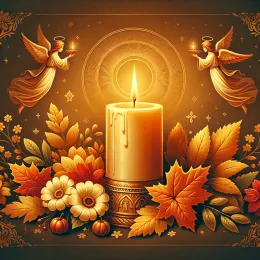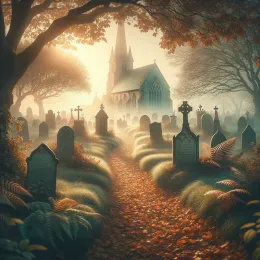





Create a card or greeting about All Saints’ Day with AI

Please wait 10–15 seconds while we create your unique greeting. This process ensures full personalization just for you! Do not leave or reload the page to avoid losing progress. Thank you for your patience!
Understanding All Saints’ Day
All Saints’ Day is a significant celebration observed in various cultures around the globe. This day honors all the saints, known and unknown, who have attained heaven. It serves as a reminder of the virtue and holiness that individuals can aspire to in their lives. The observance varies widely, reflecting the rich tapestry of traditions and beliefs associated with this day.
Historical Background
The origins of this celebration can be traced back to the early Christian church. Initially, it was a day to commemorate martyrs who had died for their faith. Over time, the focus expanded to include all saints, allowing a broader recognition of those who have lived exemplary lives. The date of November 1 was officially designated by Pope Gregory III in the 8th century, aligning with existing pagan festivals that celebrated the harvest and honored the dead.
Global Traditions
Different countries have their unique ways of observing this day, often blending local customs with religious practices. In many Western nations, it is a solemn occasion marked by church services and remembrance of the deceased. In contrast, some cultures incorporate festive elements, celebrating life alongside honoring those who have passed.
Celebrations in Europe
In countries like Spain and Italy, All Saints’ Day is a public holiday. Families gather to visit cemeteries, cleaning graves and leaving flowers, particularly chrysanthemums. In France, it is customary to prepare special meals and pastries, such as ‘gâteau de la Toussaint,’ which are enjoyed in the company of loved ones.
Observances in Latin America
Latin American countries often blend indigenous traditions with Catholic practices. For instance, in Mexico, this day coincides with Día de los Muertos, a vibrant celebration honoring deceased loved ones with altars, marigolds, and sugar skulls. Families create intricate displays to invite the spirits of the deceased to join the living in celebration.
Religious Significance
For many, All Saints’ Day serves as a time of reflection and spiritual renewal. It offers an opportunity to contemplate the lives of saints and their virtues, inspiring individuals to live more meaningful and compassionate lives. Church services often include prayers and readings that emphasize the importance of community and the interconnectedness of all believers.
Modern Interpretations
In contemporary society, the observance of this day has evolved. While many still adhere to traditional practices, others find new ways to celebrate. Social media has become a platform for sharing memories of loved ones, with hashtags and tributes that connect people across distances. This modern interpretation allows for a communal experience that transcends geographical boundaries.
Community Events
Many communities organize events that foster a sense of togetherness. These can include candlelight vigils, memorial services, and community feasts. Such gatherings not only honor the deceased but also strengthen communal bonds, reminding participants of the importance of support and solidarity.
Symbols and Iconography
Various symbols are associated with All Saints’ Day, each carrying deep meaning. Candles are lit to symbolize the light of the saints guiding the faithful. Flowers, particularly those that bloom in autumn, represent the beauty of life and the cycle of death and rebirth. Additionally, images of saints are often displayed, serving as reminders of their inspiring lives.
Conclusion
All Saints’ Day is more than just a day of remembrance; it is a celebration of life, virtue, and community. As people around the world come together to honor the saints and their loved ones, they also reflect on their own lives and the legacy they wish to leave behind. This day serves as a powerful reminder of the enduring impact of those who have come before us and the importance of continuing their spirit of love and compassion.

Best Examples of wishes


FAQ

Interesting Articles and Tips for holidays and wishes

How to Make Digital Invitations for Your Next Party

Top Tips for Creating Personalized Greeting Cards Online

Best Wishes: Crafting Unique Birthday Greetings Easily

Why AI Enhances Creativity in Writing Holiday Greetings

Celebrate Milestones with AI-Powered Congratulation Cards


Ваш отзыв добавлен!

















